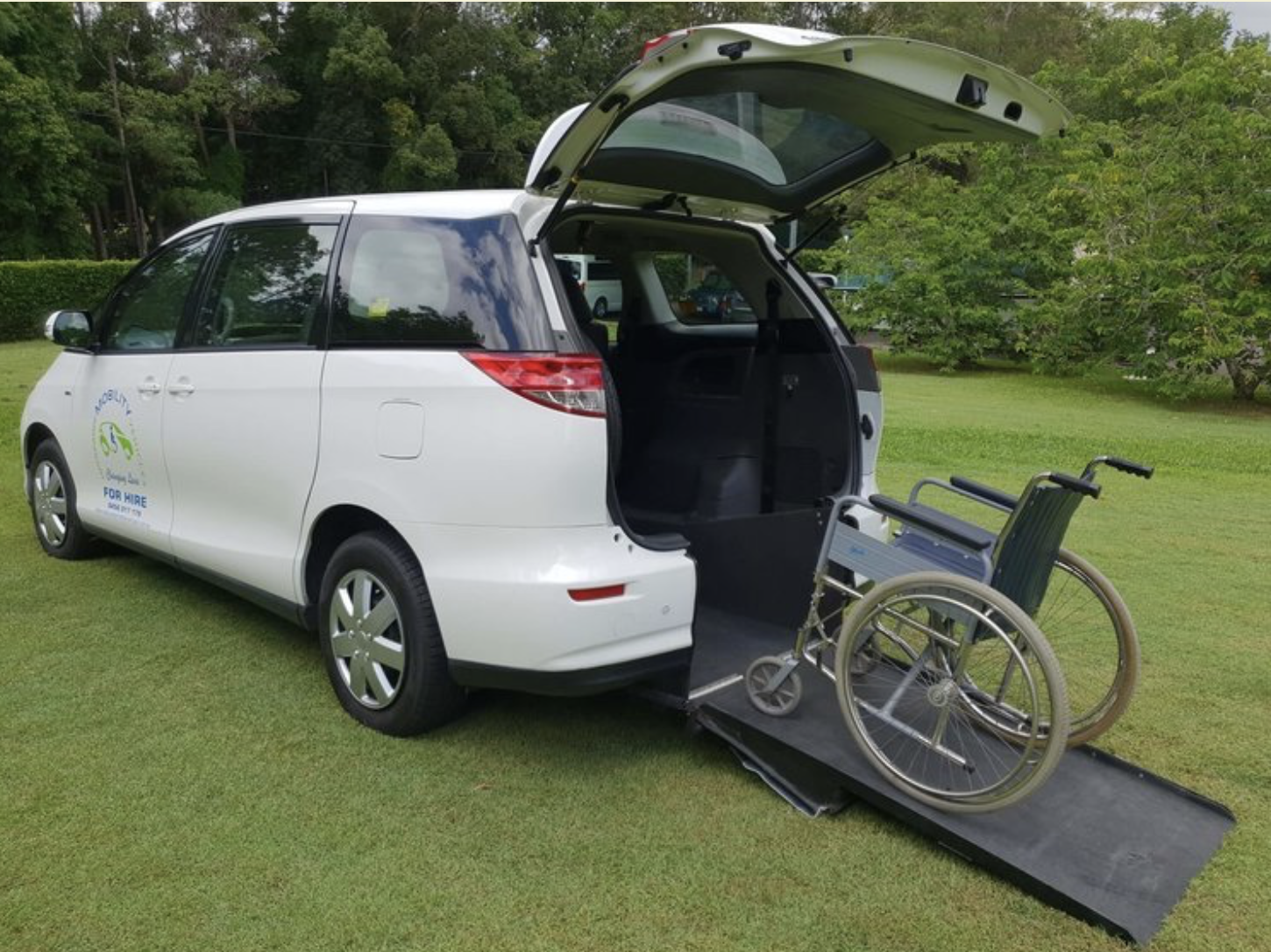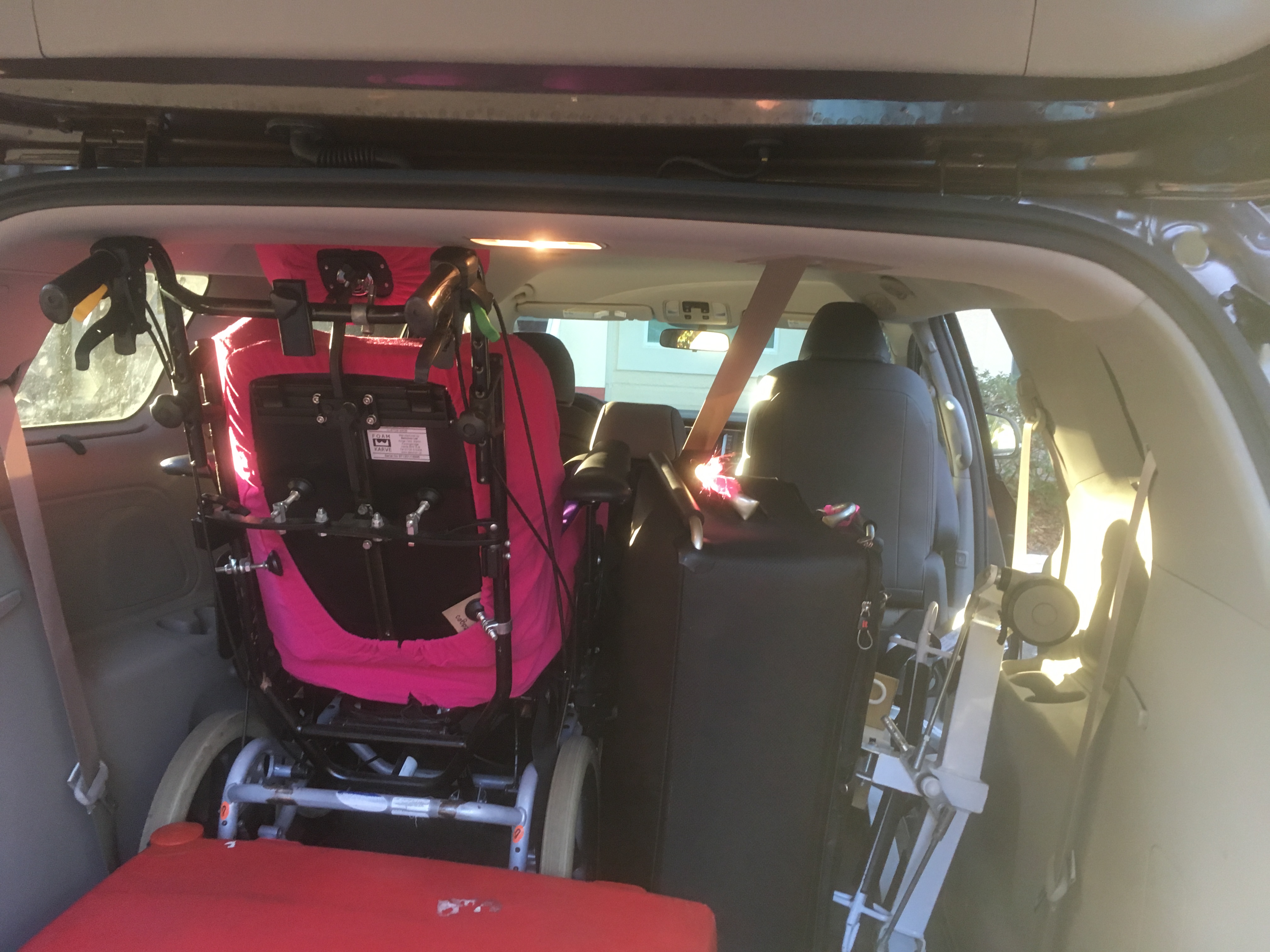If you cannot or do not wish to take your own car or van on holiday, renting one may be an option. Prices for hiring a wheelchair accessible vehicle (WAV) vary greatly, particularly for larger vehicles which are great for larger familygroups, or for those who need capacity for 2 or more wheelchair passengers, and be able to carry extra luggage.
Do you really need one? Good question! Excessive vehicle rental costs can be avoided by getting as much information together as you can . Research here is key - choosing accommodation close to accessible public transportation can save massively on holiday costs, but merely the fact of being close to accessible public transport may limit your choice of accommodation to hotels and motels. Access to the accessible transport ideally should be within 500 metres, and of course the route to it should ideally be on level ground. Particularly in the UK, we are seeing an increasing amount of privately owned properties offering superb facilities for the wheelchair user, but very often these are in areas devoid of accessible public transport. If you don't rent a WAV, you have to ensure that your transport from arrival point to your accommodation is reliable and suitable.
The trustees of EMT were able to use an ordinary MPV whilst in Florida for a one day, one-way rental from Orlando to Miami and saved over US$500 on the cost of a WAV as the unfolded wheelchair fitted in the rear of the vehicle, and they were able to lift their daughter on to the rear seat, and secure her comfortably. Cost differences were due to not having to pay the WAV minimum rental period of 3 days nor a hefty drop off fee, nor the extra mileage charge for exceeding 100 miles in a day.
Pitfalls of Accessible Vehicle Rental versus Non-Accessible Rental : Many of the global car hire companies such as Hertz, Enterprise, Avis, Sixt etc rarely offer WAVs for hire, however they may offer cars with adaptations to steering and propulsion controls. Some locations might have a selection of WAVs (e.g. Enterprise in the UK), but in the main these are offered by independent companies, who may also operate a sales and service facility alongside their WAV rental business. These smaller specialists tend to be experts in their field. Users of non-WAVs can generally enjoy unlimited mileage, no drop-off fee when returning the vehicle to a different town or city, and reasonable insurance rates. The WAV renter will normally be faced with being limited to a certain number of miles per day (with extras charge per mile over this figure) and possibly a hefty fee for leaving the vehicle in a place other from where you started. The reason for this is a) WAVs are more expensive to buy in the first place and are not 'moved on' after 6 months. b) Non-WAVs are numerous and generally there are always renters doing the reverse journey, and b) There is normally a minimum 3 day rental period for WAVs, and higher general running costs. |  |
Methods of Rental The traditional rental of a WAV from an organisation is normally for a minimum period of 3 days, but this can be shorter subject to negotiation. Longer rentals of three weeks are more are normally required by local drivers whose own WAVs are being repaired, but these longer rentals can be made available to any customer. A new innovation in the field of WAV rental is by using a 'peer-to-peer' organisation whereby owners of WAVs make their own private vehicle available when not in use, for rental. This opens up a massive inventory of available locations and vehicles . The leader in Europe is the French organisation 'Wheeliz'. Type of Vehicles available for rental : These range from the smaller MPV (of 'mini-van') vehicles which take one wheelchair passenger, to larger vehicle like the Mercedes Sprinter which can carry 4 or more wheelchair passengers. Always consider space for luggage and any other equipment such as mobile hoists, and medical equipment. Rarely available are accessible motor homes and campers, the largest of these are in North America. No matter how large the vehicle we recommend that you make absolutely sure that it will be suitable, as space (particularly in the bathroom) can be a challenge. Rarer still are motor homes with a ceiling track hoist. Using accessible airport transfers and booking excursions : Many cities around the world have excellent fully accessible rail services, particularly from airports to the city centre. Airports in the USA are really bad at this with a few exceptions. For some reason, the USA seems to favour buses over rail. All Greyhound Buses in the USA have two wheelchair spaces. There are some excellent providers all over the world - however, be prepared for questionable safety standards in some countries though, where a 'can do' attitude seems to outweigh the need for safety! All reputable WAV rental companies will ensure that all securing points, seat belts etc are in proper working order. |  Personal experience of using a standard MPV or Minivan instead of a wheelchair van. This particular van had a good low level floor which enable us to carry the wheelchair without dismantling it. We still had to manually lift our daughter onto the seat. Not suitable for everyone! Personal experience of using a standard MPV or Minivan instead of a wheelchair van. This particular van had a good low level floor which enable us to carry the wheelchair without dismantling it. We still had to manually lift our daughter onto the seat. Not suitable for everyone! |
It is quite shocking that some coach and bus operators, particularly in the USA where litigation is king, simply either do not service their equipment to make sure it operates safely and correctly, or train their drivers how to use the equipment. If you ever experience this, take a note of the operator, vehicle number and drivers name and follow it up with the company as soon as is practicable.
Enable my Trip trustees have also been transferred in questionable vehicles in the past - from a van with wooden planks for a 'ramp' in Buenos Aires with no method of securing the wheelchair; to chairs strapped to the roof of a minibus in Egypt or a wheelchair wedged inside a Red Cross ambulance in the Seychelles (no strapping, lift or ramp). It should be noted that these instances were the last resort where absolutely no alternatives were possible. Beware!